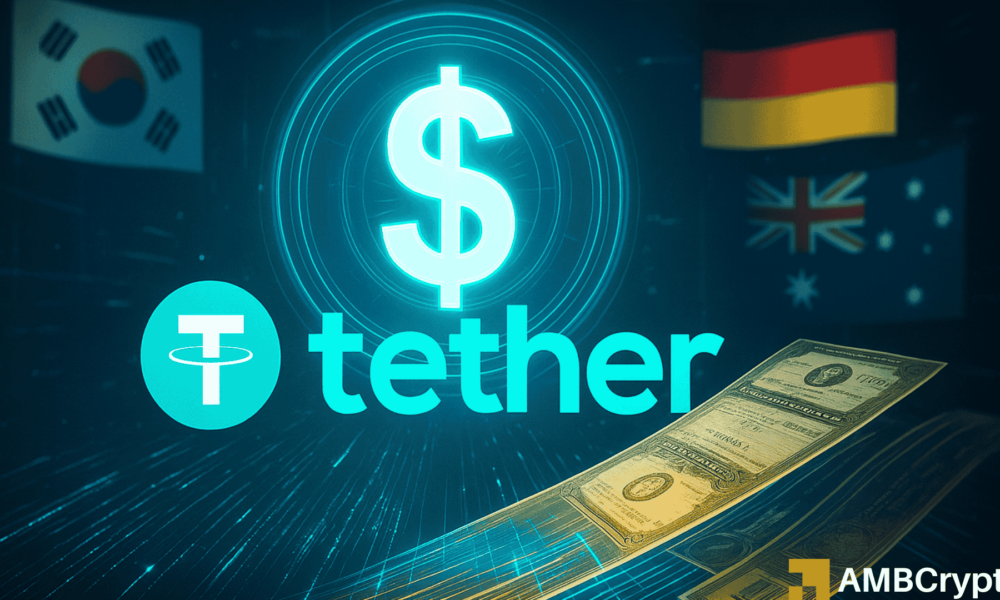Tether’s Dominance: An In-Depth Look at Its Treasury Holdings and Market Impact
Introduction to Tether’s Treasury Holdings
Tether, a significant player in the cryptocurrency world, has recently made headlines by becoming one of the largest holders of U.S. Treasury bonds. According to its Q3 2025 attestation report, Tether holds around $135 billion in U.S. Treasuries, ranking as the 17th largest holder globally. This notable achievement indicates a substantial shift in the role of stablecoins within the traditional finance landscape, suggesting that private entities can exert considerable influence over global financial systems, sometimes even surpassing entire nations.
Significance of Tether’s Position
Tether’s vast holdings highlight the ever-growing importance of stablecoins, showing how they have evolved from mere crypto assets into vital instruments in the finance sector. The stablecoin issuer’s notable rise in U.S. Treasury holdings illustrates its capacity to draw significant investment resources, even exceeding countries like South Korea and Germany. Such developments raise questions about the sustainability and implications of a private company’s newfound position as a major player in government debt markets.
Record Profits and Financial Health
As Tether’s Treasury portfolio grew, so did its profitability. The company reported an astounding year-to-date net profit exceeding $10 billion through Q3 2025, projecting nearly $15 billion in profits by the end of the year. With a profit margin of 99%, Tether’s financial health is astonishing by any industry standard. Additionally, in just one quarter, it issued over $17 billion worth of USDT, inflating its total circulating supply to more than $174 billion. This trajectory indicates Tether’s ability to leverage its treasury investments effectively, creating a robust financial foundation.
Dominance in the Stablecoin Market
Despite experiencing a decrease in market dominance—from 70% in November 2024 to 59.9% in October 2025—Tether’s USDT has added nearly $50 billion to its supply during this span. This growth occurred even amid rising competition from rivals such as Circle’s USDC and regulatory pressures, particularly in Europe. The stablecoin market itself has witnessed remarkable expansion, reaching around $316 billion in 2025, affirming Tether’s leading position despite these challenges.
Future Plans and Strategic Moves
In response to its regulatory environment, Tether is set to launch USAT, a U.S.-regulated stablecoin tailored for American markets. Designed in compliance with the newly enacted U.S. stablecoin legislation (the GENIUS Act), this new offering allows businesses and institutions access to a digital alternative for cash and payment processing. Operating under the auspices of federally regulated crypto bank Anchorage Digital, USAT aims to further solidify Tether’s footprint in the U.S. market while allowing USDT to retain its global presence.
Ongoing Developments and Broader Goals
Beyond its stablecoin ventures, Tether is also expanding its regulated operations. Recently, the company settled litigation regarding Celsius without impacting the reserves backing its tokens in circulation, demonstrating its keen financial management. Moreover, Tether has applied for an Investment Fund License in El Salvador, broadening its operational capabilities and emphasizing its commitment to regulatory compliance. Paolo Ardoino, CEO of Tether, asserts that with its record U.S. Treasury exposure, the company continues to be a cornerstone of reliability in the financial and technological realms.
Conclusion
In summary, Tether’s remarkable rise as a principal holder of U.S. Treasuries signals not only its financial acumen but also the increasing significance of stablecoins in global finance. As Tether navigates regulatory landscapes and expands its offerings, its position solidifies the role of digital assets in shaping future financial systems. As observed through its extraordinary growth, profitability, and strategic plans, Tether is poised to remain an influential player within both cryptocurrency and traditional finance sectors.
















